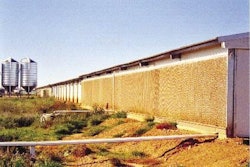Canada announced results of a second annual survey of wild birds for avian influenza with no evidence of highly pathogenic (HPAI) subtypes including H5N1 in the population. Over 12,000 birds were tested by the Canadian Food Inspection Agency (CFIA) during 2006, including resident and migrant species and live and dead birds right across Canada.
In a forward thinking ‘play-safe’ move, they sampled birds in Iceland within the crossover area between the West Atlantic and East Atlantic migratory flyways, where North American birds and European birds have opportunities to mix. Four hundred samples received from Iceland where ring banding is carried out were tested for H5N1 at the CIFA laboratory in Winnipeg.
Like the first annual survey in 2005, this one revealed several different subtypes of the influenza A virus, including H5 subtypes, but of the commonly-carried low pathogenic avian influenza (LPAI). They included one H5N9 in Alberta, H5N2 (two in Quebec and one in British Colombia) and one H5N1 in Prince Edward Island. Being LPAI they are not considered to impact heavily on wild birds or poultry with which they may come into contact.
Canada’s wild bird survey complements a much larger US survey of up to 100,000 birds which concentrates on the huge breeding grounds of Alaska, thought to be the most likely entry point for Asian strains of H5N1. The Canadian effort is more focused on eastern Canada.


















